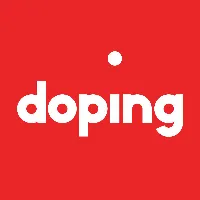
Customer Analytics
Organizations large and small are inundated with data about consumer choices. But that wealth of information does not always translate into better decisions. Knowing how to interpret data is the challenge -- and marketers in particular are increasingly expected to use analytics to inform and justify their decisions. Marketing analytics enables marketers to measure, manage and analyze marketing performance to maximize its effectiveness and optimize return on investment (ROI). Beyond the obvious sales and lead generation applications, marketing analytics can offer profound insights into customer preferences and trends, which can be further utilized for future marketing and business decisions. This course gives you the tools to measure brand and customer assets, understand regression analysis, and design experiments as a way to evaluate and optimize marketing campaigns. You'll leave the course with a solid understanding of how to use marketing analytics to predict outcomes and systematically allocate resources. For more information on marketing analytics, you may visit; http://dmanalytics.org. You can also follow my posts in Twitter, @rajkumarvenk, and on linkedin; www.linkedin.com/in/rajkumar-venkatesan-14970a3.
WEEK 1
Introduction to Customer Analytics
What is Customer Analytics? How is this course structured? What will I learn in this course? What will I learn in the Business Analytics Specialization? These short videos will give you an overview of this course and the specialization; the substantive lectures begin in Week 2.
WEEK 2
Descriptive Analytics
In this module, you’ll learn what data can and can’t describe about customer behavior as well as the most effective methods for collecting data and deciding what it means. You’ll understand the critical difference between data which describes a causal relationship and data which describes a correlative one as you explore the synergy between data and decisions, including the principles for systematically collecting and interpreting data to make better business decisions. You’ll also learn how data is used to explore a problem or question, and how to use that data to create products, marketing campaigns, and other strategies. By the end of this module, you’ll have a solid understanding of effective data collection and interpretation so that you can use the right data to make the right decision for your company or business.
WEEK 3
Predictive Analytics
Once you’ve collected and interpreted data, what do you do with it? In this module, you’ll learn how to take the next step: how to use data about actions in the past to make to make predictions about actions in the future. You’ll examine the main tools used to predict behavior, and learn how to determine which tool is right for which decision purposes. Additionally, you’ll learn the language and the frameworks for making predictions of future behavior. At the end of this module, you’ll be able to determine what kinds of predictions you can make to create future strategies, understand the most powerful techniques for predictive models including regression analysis, and be prepared to take full advantage of analytics to create effective data-driven business decisions.
WEEK 4
Prescriptive Analytics
How do you turn data into action? In this module, you’ll learn how prescriptive analytics provide recommendations for actions you can take to achieve your business goals. First, you’ll explore how to ask the right questions, how to define your objectives, and how to optimize for success. You’ll also examine critical examples of prescriptive models, including how quantity is impacted by price, how to maximize revenue, how to maximize profits, and how to best use online advertising. By the end of this module, you’ll be able to define a problem, define a good objective, and explore models for optimization which take competition into account, so that you can write prescriptions for data-driven actions that create success for your company or business.
WEEK 5
Application/Case Studies
How do top firms put data to work? In this module, you’ll learn how successful businesses use data to create cutting-edge, customer-focused marketing practices. You’ll explore real-world examples of the five-pronged attack to apply customer analytics to marketing, starting with data collection and data exploration, moving toward building predictive models and optimization, and continuing all the way to data-driven decisions. At the end of this module, you’ll know the best way to put data to work in your own company or business, based on the most innovative and effective data-driven practices of today’s top firms.
7-day Free Trial
Customer Analytics is part of the larger Business Analytics Specialization. Your 7-day free trial includes:
-
Unlimited access to all courses in the Specialization
Watch lectures, try assignments, participate in discussion forums, and more.
-
Cancel anytime.
No penalties - simply cancel before the trial ends if it's not right for you.
-
$79 USD per month to continue learning after trial ends.
Go as fast as you can - the faster you go, the more you save.
-
Certificate when you complete.
Share on your resume, LinkedIn, and CV.
Taught by: Eric Bradlow, Professor of Marketing, Statistics, and Education, Chairperson, Wharton Marketing Department, Vice Dean and Director, Wharton Doctoral Program, Co-Director, Wharton Customer Analytics Initiative
The Wharton School
Taught by: Peter Fader, Professor of Marketing and Co-Director of the Wharton Customer Analytics Initiative
The Wharton School
Taught by: Raghu Iyengar, Associate Professor of Marketing
The Wharton School
Taught by: Ron Berman, Assistant Professor of Marketing
The Wharton School
To participate in this training, you can Enroll






